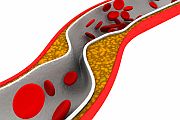
WEDNESDAY, Feb. 4, 2015 (HealthDay News) — Patients with peripheral arterial disease (PAD) who face amputation of a foot or leg can have their limb saved by minimally invasive surgery to improve blood flow, a new study suggests.
Among the patients tested and treated in a limb salvage program, amputation rates dropped nearly 80 percent, according to Dr. Julio Sanguily, a vascular surgeon with Martin Health System in Stuart, Fla., who led the study.
“A multidisciplinary approach that includes vascular surgeons, with support from podiatry, infectious disease specialists and wound care, can significantly reduce the number of amputations,” Sanguily said.
The results of his trial were presented Tuesday at the International Symposium on Endovascular Therapy meeting in Hollywood, Fla. Research presented at medical meetings is considered preliminary until published in a peer-reviewed journal.
According to Sanguily, 8 million to 12 million Americans have peripheral arterial disease, a condition in which plaque builds up in blood vessels in the legs, decreasing blood flow.
Sanguily noted that 185,000 Americans have leg or foot amputations every year, mostly due to poor circulation caused by PAD. “That’s a staggering number,” he said. Those most at risk are the elderly and those with diabetes, he added.
Because amputation has such a negative impact on quality of life, half of those people who have the procedure die within 18 months, he noted. “If you have an amputation above or below the knee, you have a 40 to 50 percent chance of dying in 18 months,” he said.
When the Martin Health System began its limb salvage program, amputations fell by 79 percent over five years. In the program, patients suffering from PAD undergo an angiogram, which is an X-ray to assess blood flow through the arteries. Then, if needed, patients undergo a procedure to clear out the blocked arteries and improve blood flow, Sanguily explained.
Treatments used to clear the arteries included angioplasty and other minimally invasive treatments such as atherectomy, a roto-rooter type device that cuts plaque away from the artery. In some cases, a stent, a small mesh tube, was placed to keep the artery open, he said.
In addition, hyperbaric oxygen therapy that helps heal wounds that won’t heal — a condition that diabetics often suffer — was used.
Over the years, even though more patients were evaluated each year, the number of amputations steadily declined, he said.
In 2010, 24 of the 84 patients (29 percent) had amputations, and in 2011, only 12 percent of patients had amputations. In 2012, the percentage of patients who had amputations dropped to 4 percent. By 2013, it was only 2 percent, and in 2014 it was down to 1 percent, Sanguily said.
According to Sanguily, the key to reducing amputations is first to educate doctors who treat those at highest risk — such as elderly patients and those with diabetes or kidney failure — about the improved treatments and have them refer patients to physicians who specialize in endovascular therapy.
Dr. Vicken Pamoukian, director of surgery at Lenox Hill Hospital in New York City, said, “The study proves yet again that with proper education of patients and physicians, and treatment at a specialized advanced care center that is prepared to take on the challenge with a team approach, the patient with peripheral arterial disease can have outcomes superior to what is commonly seen today.”
The procedure is covered by most health insurance plans, including Medicare. Sanguily said that the cost of amputations to Medicare and other insurers is high — more than $11 billion a year.
“Saving limbs decreases death, increases quality of life and decreases costs,” he said.
However, a recent report in The New York Times claimed that doctors are billing Medicare millions of dollars for unnecessary procedures to open arteries in patients’ legs.
According to the report, most doctors believe that PAD can be treated with exercise and medication, with only about 10 percent of the patients requiring a procedure to prevent an amputation.
But the doctors who do these procedures claim that PAD is underrated and costs are actually lower when a patient’s leg is saved rather than amputated.
Dr. Gerald Bernstein is director of the diabetes management program at Mount Sinai Beth Israel Medical Center in New York City. He said, “We have learned that, in the world of diabetes, the simple act of having patients remove their shoes and socks allows for an examination of the peripheral pulses in the feet as well as the quality and health of the skin.”
Bernstein suggested that “this kind of exam should be a part of every person’s regular checkup and more frequently if the individual has diabetes, smokes or has symptoms that would point to compromised circulation.”
More information
For more about PAD, visit the U.S. National Institutes of Health.
Copyright © 2025 HealthDay. All rights reserved.

